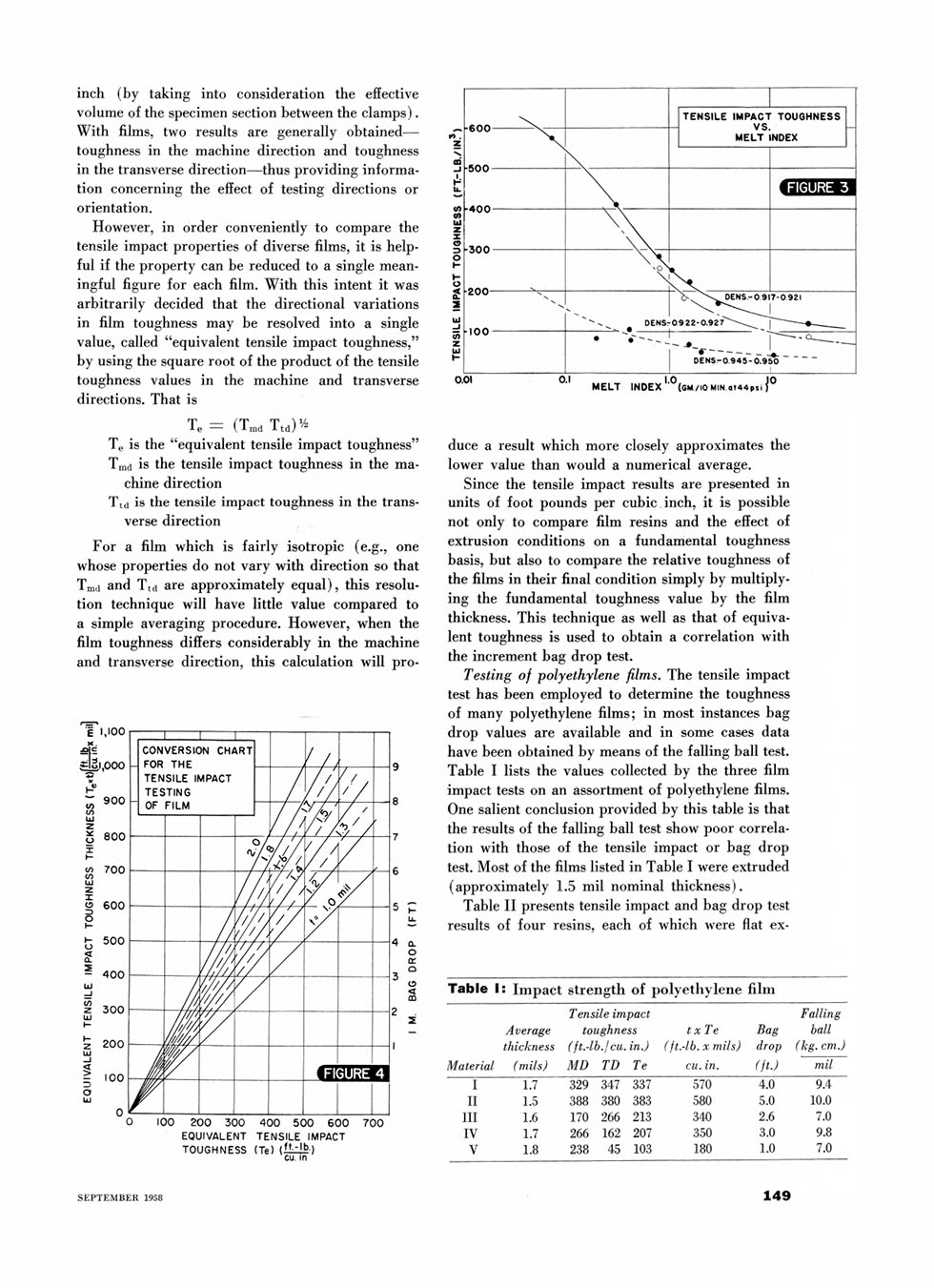


inch (by taking into consideration the effective volume of the specimen section between the clamps). With films, two results are generally obtained toughness in the machine direction and toughness in the transverse direction thus providing information concerning the effect of testing directions or orientation.
However, in order conveniently to compare the tensile impact properties of diverse films, it is helpful if the property can be reduced to a single meaningful figure for each film. With this intent it was arbitrarily decided that the directional variations in film toughness may be resolved into a single value, called "equivalent tensile impact toughness,"ť by using the square root of the product of the tensile toughness values in the machine and transverse directions. That is
Te = (Tmd Ttd)1/2
Te is the "equivalent tensile impact toughnes-ť
Tmd is the tensile impact toughness in the machine direction
Ttd is the tensile impact toughness in the transverse direction
For a film which is fairly isotropic (e.g., one whose properties do not vary with direction so that Tmd and Ttd are approximately equal), this resolution technique will have little value compared to a simple averaging procedure. However, when the film toughness differs considerably in the machine and transverse direction, this calculation will pro-
EQUIVALENT TENSILE IMPACT
TOUGHNESS (Te) (ff;~!b)
cu. in
duce a result which more closely approximates the lower value than would a numerical average.
Since the tensile impact results are presented in units of foot pounds per cubic inch, it is possible not only to compare film resins and the effect of extrusion conditions on a fundamental toughness basis, but also to compare the relative toughness of the films in their final condition simply by multiplying the fundamental toughness value by the film thickness. This technique as well as that of equivalent toughness is used to obtain a correlation with the increment bag drop test.
Testing of polyethylene films. The tensile impact test has been employed to determine the toughness of many polyethylene films; in most instances bag drop values are available and in some cases data have been obtained by means of the falling ball test. Table I lists the values collected by the three film impact tests on an assortment of polyethylene films. One salient conclusion provided by this table is that the results of the falling ball test show poor correlation with those of the tensile impact or bag drop test. Most of the films listed in Table I were extruded (approximately 1.5 mil nominal thickness).
Table II presents tensile impact and bag drop test results of four resins, each of which were flat ex-
Tabie 1: Impact strength of polyethylene film
Tensile impact Falling
|
Average |
toughness |
txTe |
Bag |
ball | |||
|
thickness |
(ft.-lb.fcu. |
in.) |
(ft.-lb. x mils) |
drop |
(kg. cm.) | ||
|
Material |
( mils) |
MD |
TD |
Te |
cu. in. |
(ft.) |
mil |
|
I |
1.7 |
329 |
347 |
337 |
570 |
4.0 |
9.4 |
|
II |
1.5 |
388 |
380 |
383 |
580 |
5.0 |
10.0 |
|
III |
1.6 |
170 |
266 |
213 |
340 |
2.6 |
7.0 |
|
IV |
1.7 |
266 |
162 |
207 |
350 |
3.0 |
9.8 |
|
V |
1.8 |
238 |
45 |
103 |
180 |
1.0 |
7.0 |